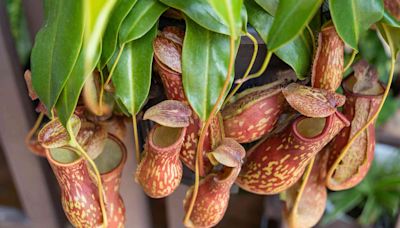Search results
Plant - Wikipedia. For other uses, see Plant (disambiguation). Plants are the eukaryotes that form the kingdom Plantae; they are predominantly photosynthetic.
Jun 18, 2024 · Plant, any multicellular, eukaryotic, usually photosynthetic life-form in the kingdom Plantae. There are an estimated 390,900 different species of plants known to science. Learn more about the plant kingdom, including the life and evolutionary histories and physical characteristics of the major plant groups.
Plants are one of six big groups ( kingdoms) of living things. They are autotrophic eukaryotes, which means they have complex cells, and make their own food. Usually, they cannot move (not counting growth ). Plants include familiar types such as trees, herbs, bushes, grasses, vines, ferns, mosses, and green algae.
Jun 12, 2020 · The Main Kinds of Plants. All types of plants are classified by two main groups: plants without seeds and plants with seeds. Plants without seeds are algae, mosses, ferns, and liverworts. These unique plant types produce spores that are distributed by the wind.
Browse 1,433,000 global plant names, 531,500 detailed descriptions, and 409,100 images
Apr 28, 2017 · Plant Definition. Plants are multicellular organisms in the kingdom Plantae that use photosynthesis to make their own food. There are over 300,000 species of plants; common examples of plants include grasses, trees, and shrubs. Plants have an important role in the world’s ecosystems.
Jul 17, 2018 · Plants - Classification Based On Growth Habit. We see a huge variety of plants all around us. Among which few are terrestrial and aquatic plants. Despite this fact, they all have the same parts and the same functions; they appear unique with different types of roots, stems, leaves, flowers, fruits, seeds etc.
The plant kingdom consists of multicellular eukaryotic life-forms (see eukaryote) with six fundamental characteristics: photosynthesis as the almost exclusive mode of nutrition, essentially unlimited growth at meristems, cells that contain cellulose in their walls and are therefore somewhat rigid, the absence of organs of movement, the absence ...
Apr 9, 2020 · On this page you’ll find a complete guide to plants and the plant kingdom. You’ll discover what makes a plant a plant, why plants are important, the different types of plant and how plants reproduce. This is the first in a series of articles on the plant kingdom.
Types of Plants: Plants are all unique regarding physical appearance, structure, and physiological behavior. Aside from that, they also vary in their habitats, tolerance, and nutrient requirement.


